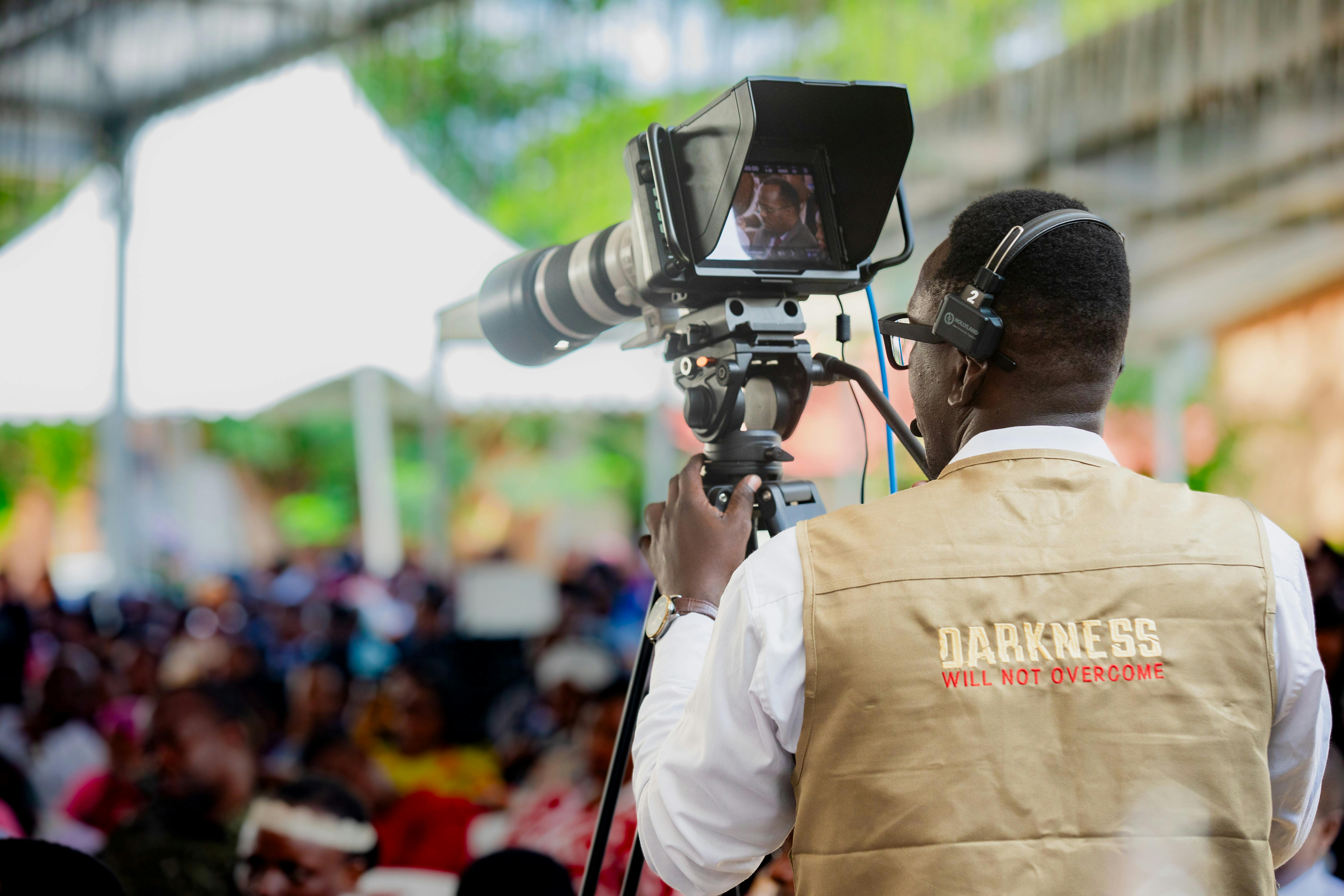Press Conference Setup and Media Relations in Japan
Author
Jack
Date Published

Press conferences in Japan demand precision, hierarchy, and linguistic clarity. Whether hosted at a hotel ballroom, city hall, or exhibition venue, every detail from seating layout to camera placementis regulated by both venue protocols and local media expectations. International organizers often underestimate the formality and advance coordination required for Japanese media events. The goal is not just to share information but to present it with respect, neutrality, and bilingual balance.
This guide explains how to plan and manage bilingual press briefings in Japan through structured layouts, strategic outreach, disciplined Q&A management, and compliant filming permissions.
Layout Design and Room Arrangement
The physical design of a press conference in Japan mirrors its communication hierarchy. The front row belongs to senior media outlets, and seating is assigned by outlet name, not arrival order. Every element from backdrop height to microphone count, must be pre-approved by the venue and PR lead.
Standard Press Conference Layout
Zone | Purpose | Key Requirements | Notes for Planners |
|---|---|---|---|
Stage Area | Speaker podium and backdrop | 1.5–2 m deep stage, branded backdrop under venue height limit | Use neutral tones, bilingual event logo |
Interpreter Position | Next to podium or front-left | Seated or standing mic for simultaneous translation | Provide a monitor feed if offstage |
Media Seating | Assigned by outlet name | 3–4 front rows for TV and national dailies | Keep clear camera sightlines |
AV & Camera Zone | Rear section of room | Tripod clearance of 1.5 m minimum | Cable mats for safety compliance |
Registration & Check-in | Entrance table | Bilingual media list, press kits, consent forms | Staffed by PR and interpreter assistants |
Mini Checklist
- Secure stage backdrop design approval from the venue
- Ensure equal visibility for both Japanese and English logos
- Provide headsets or bilingual monitors for press attendees
- Conduct a full AV test one hour before doors open
Clause Example:
All press conferences shall adhere to the approved room layout and seating plan, ensuring equitable visibility and accessibility for accredited media under venue and broadcasting regulations.
Coordinate layout plans early with venue staff, as Japanese facilities often enforce strict signage and lighting rules.

Media Outreach and Press Coordination
Media engagement in Japan relies heavily on established relationships and courtesy communication. Invitations are expected at least two weeks in advance, followed by a reminder email and personal phone confirmation.
Outreach Workflow Table
Timeline | Action | Responsibility | Notes |
|---|---|---|---|
T-14 Days | Send official press release in Japanese and English | PR Agency or Organizer | Include RSVP link and event credentials |
T-10 Days | Follow up with top-tier outlets (NHK, Nikkei, Asahi, Mainichi) | Media Relations Lead | Confirm attendance and filming interest |
T-7 Days | Share venue access map and parking details | PR Assistant | Include registration time and dress code |
T-1 Day | Reconfirm attendance and provide updated speaker list | Bilingual PR Staff | Prepare name tags and press kits |
Post-event | Send thank-you note and photo release link | Organizer | Include quotes and official statement |
Mini Checklist
- Prepare bilingual press kits (printed + USB)
- Maintain RSVP tracking in both English and Japanese
- Assign one bilingual staff member for each media group
- Designate a holding area for late arrivals or unregistered crews
Clause Example:
All media engagement and press access shall be conducted through registered channels, with bilingual communication ensuring consistent information delivery to both domestic and international outlets.
Maintain a polite, formal tone in all follow-up correspondence; Japanese journalists value precision and respect in communication.

Q&A Management and Interpreter Coordination
The Q&A portion requires careful timing and translation control. Unlike many Western press events, Japanese Q&A sessions are formal, with questions often submitted in advance. The interpreter plays a key role in preserving tone and nuance.
Q&A Management Framework
Step | Action | Language Flow | Moderator Cue |
|---|---|---|---|
1 | Collect pre-submitted questions | Japanese and English | Screen questions for sensitive content |
2 | Begin Q&A after all speeches | Japanese → English → Japanese | “We will now open the floor for questions.” |
3 | Address spontaneous questions | Bilingual | Maintain fairness between outlets |
4 | Interpreter repeats answers clearly | Speaker → Interpreter → Media | Keep responses under one minute each |
5 | Close session with appreciation | Japanese → English | “We thank the media for their cooperation.” |
Mini Checklist
- Assign a bilingual moderator to manage timing
- Limit Q&A to 15–20 minutes unless extended in advance
- Ensure interpreters receive the full briefing pack
- Maintain polite phrasing even when declining questions
Clause Example:
All press conference Q&A sessions shall be moderated bilingually, ensuring each inquiry and response is delivered with accuracy, neutrality, and equal media access.
Always brief the interpreter on tone and sensitivity, especially for corporate or government-related announcements.

Filming Permissions and Compliance
Japanese venues regulate all filming activities, including tripod placement, power use, and camera feeds. Media must apply for filming permissions, known as satsuei kyoka, before the event. Unauthorized recording can result in penalties or venue intervention.
Filming Permission Table
Type | Scope | Authority Required | Processing Time |
|---|---|---|---|
Still Photography | Within press seating only | Venue and Organizer | 1–2 days |
Broadcast Video | Stage and audience shots | Venue, Organizer, PR Agency | 3–5 days |
Live Streaming | Full audio and video feed | Venue + Legal Review | 7–10 days |
Drone Filming | Exterior aerials only | Local Municipality and Police | 2 weeks minimum |
Mini Checklist
- Confirm all filming permissions at least 10 days prior
- Label approved camera positions with floor tape
- Keep power extension boards secured and taped
- Collect signed consent from speakers for recording
Clause Example:
All photography and video recording shall comply with venue regulations and approved filming permits, with access restricted to accredited press and authorized technical personnel.”
Assign one media marshal to manage camera placement and ensure cable safety compliance throughout the event.
FAQs
1. How far in advance should press invites be sent?
At least two weeks before the event, followed by a polite reminder and RSVP confirmation.
2. Are bilingual interpreters mandatory for international press conferences?
Yes. Every major venue expects English–Japanese interpretation for briefings involving foreign speakers.
3. Can local media film the entire event?
Only within permitted zones approved by the venue and organizer through the filming authorization process.
4. How long should the entire press conference last?
Typically 45 to 60 minutes including Q&A, with punctual start and finish times.
5. Are post-event press materials required?
Yes. Sending a follow-up release with photos and quotes demonstrates professionalism and supports ongoing media coverage.
Conclusion
Managing press conferences in Japan requires a balance of precision, courtesy, and control. When seating, communication, and filming are planned according to local protocol, the result is a smooth, credible media event that enhances brand reputation.
By aligning global messaging with Japanese expectations of respect and organization, planners build trust across both domestic and international media. To receive editable press kit templates, media registration forms, and bilingual Q&A scripts, connect with us for a complete press conference toolkit.